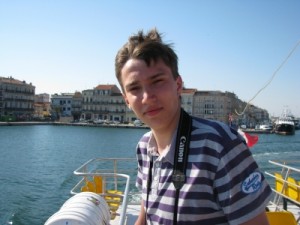 On the 26th of January 2023 we will have the pleasure to have Dr. Philipp Grigoryev with us on a guest lecture entitled “What an exciton wave function hides“. The event will be hosted in person at the New Campus and on-line on BigBlueButton.
On the 26th of January 2023 we will have the pleasure to have Dr. Philipp Grigoryev with us on a guest lecture entitled “What an exciton wave function hides“. The event will be hosted in person at the New Campus and on-line on BigBlueButton.
When: On the 26th of January 2023, Thursday!, at 12:00 MSK time
Where: New Campus room E-B2-3007/ BigBlueButton
Dr. Philipp Grigoryev is a senior researcher at the I.N. Uraltsev Spin Optics Laboratory (SOLAB) at Saint Petersburg State University in Russia. He received his MS in Physics from the same university in 2013, with a thesis titled “The magnetic field effect on excited exciton states in a wide quantum well,” and his PhD in Physics in 2017, with a thesis titled “Exciton spectroscopy in heterostructures with quantum wells in presence of magnetic field.” Dr. Grigoryev has worked at SOLAB as a senior researcher since 2017 and as an engineer-researcher from 2011-2017 and at the department of Physics from 2009-2011. His research interests include semiconductor nanostructures, optical spectroscopy, exciton polaritons and spin-related phenomena. He has several publications in reputable journals.
The talk presents the study of the exciton wave function in semiconductor quantum wells. Using a combination of theoretical calculations and experimental measurements, we investigate the spatial distribution of the polarization induced in the QW by the exciton state. Our results reveal a strong dependence of the reflectance spectra on the properties of the wave function. We would like to present our findings on the two exemplar studies.
The first one is a study of excitons in triangular quantum wells (QWs) using a combination of experimental and theoretical methods. While excitons in QWs have been studied for decades, the potential profiles of QWs in real-life materials can be complex due to various processes that occur during growth of heterostructures, such as monolayer fluctuations of interfaces, segregation of atoms, and asymmetry of potential profiles. The study focuses on asymmetric InGaAs/GaAs QWs, and the authors use reflectance spectroscopy to study several exciton transitions in these QWs in order to obtain information about the potential profiles for the excitons. The authors have developed an approach for the direct numerical solution of the Schrödinger equation for excitons in QWs with arbitrary potential profiles, and use this approach to accurately model the reflectance spectra using only two fitting parameters.
The second study uses the mentioned numerical method, the finite difference method, to calculate the exciton wave function in QWs and discusses the limitation of this method. The study compares the results of this method with two conventional approaches for the exciton wave function approximation in QWs: the center-of-mass (CoM) quantization approach and a quasi-two-dimensional exciton approach. The study finds that in some cases, the conventional approaches fail to provide accurate results. The study uses reflectance spectroscopy to extract radiative decay rates for the exciton states in a 240-nm GaAs/AlGaAs QW. The study finds that the experimental data shows a higher oscillator strength than the CoM approach, and the reason for this is revealed to be the presence of a “dead” layer in the CoM approximation, which leads to an underestimation of the radiative decay rate for the excited exciton states.